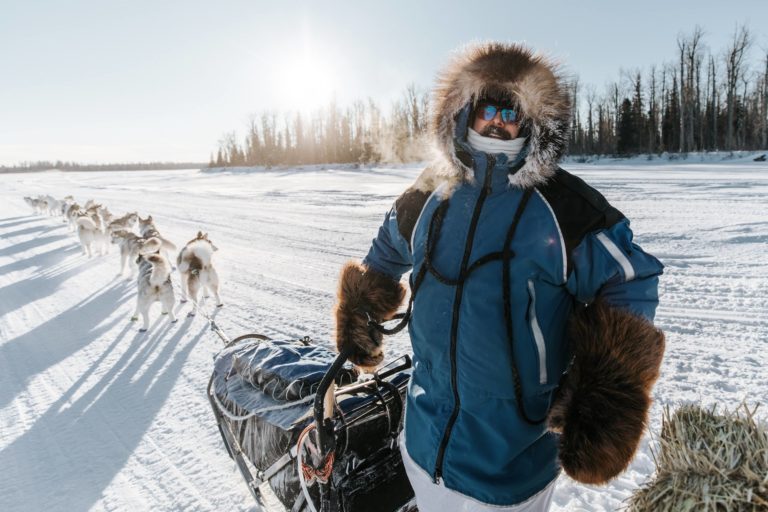NESA member mushes in famous Alaskan sled dog race

Slogging through ankle-deep, wet snow and facing 96 miles to the next checkpoint, Iditarod sled dog musher Tom Schonberger thought about his team of Siberian huskies.
They trained for months ahead of the nearly 1,000-mile trek across the icy Alaskan landscape from Anchorage to Nome, which started March 3. They qualified for the famous annual sled dog race by mushing in three other contests, including two of 300 miles in length. They had already made it 558 miles into the Iditarod, and the treacherous terrain and weather were unrelenting.
“It was snowstorm after snowstorm,” Schonberger says. “It was that soft, slushy stuff — mile after mile. It’s a race; you get what you get.”
To avoid injury to his team, the National Eagle Scout Association lifetime member decided to call it quits. It was the first time Schonberger, who earned his Eagle Scout Award in 1983, had competed in the Iditarod. Even though he didn’t finish the race, he described the arduous experience as “an amazing adventure.”
“It’s a lot tougher than it looks,” Schonberger says. “It’s not all the glamour you see on TV.”
From show dogs to sled dogs
Schonberger’s love for Siberian huskies began in college when he owned his first. Now, he and his wife Mary have 31.

The dogs are primarily show dogs; the couple has won several titles with their American Kennel Club-registered dogs. After helping a friend train for sled dog racing over a decade ago, Schonberger decided to give it a try, too.
“These dogs were bred to run,” he says.
Alaskan huskies are built for speed while Siberians can travel longer between breaks. Most mushers raise teams of Alaskan huskies; Schonberger was one of two who used Siberians in the Iditarod this year.
“I knew a lot of people were going to pass us,” Schonberger says. “It’s kind of like the tortoise and the hare.”
To find the best “tortoises,” he starts training in August, evaluating which dogs run well together. The dogs that made the final cut in his 16-dog team ranged in age from 3 to 10 years old.
They ran in three qualifying races under the careful eye of judges, who want to ensure rookie racers are up to the task of mushing 1,000 miles in fewer than two weeks with little sleep along the way.
Dogs can be dropped off at checkpoints, but mushers can’t add dogs to the team at those stops. Mushers can store dog food and sled gear, including dry socks and gloves, at the checkpoints to pick up.
“It’s like heaven,” Schonberger says of dry socks.
‘Once-in-a-lifetime’
Schonberger says his background in the Air Force and in Scouting equipped him with the skills for this endeavor. Wilderness survival, camping and problem-solving all proved useful on the trail. Schonberger isn’t sure yet if he’ll attempt the big race again, but plans to mush in shorter races.
“It was a once-in-a-lifetime shot,” Schonberger says.
Before moving to Alaska 18 years ago, he lived in Florida, and in the 1980s, he worked for five years at Philmont as a ranger, program counselor and camp director.
 Schonberger wasn’t the only Eagle Scout on the Alaskan trail this year. Check in tomorrow to read about another Eagle who made the trek.
Schonberger wasn’t the only Eagle Scout on the Alaskan trail this year. Check in tomorrow to read about another Eagle who made the trek.
Hat tip: Thanks to Schonberger who shared photos taken by Julien Schroeder, Susan Barteland Joel Forsman.
